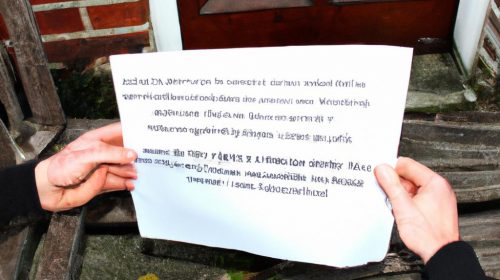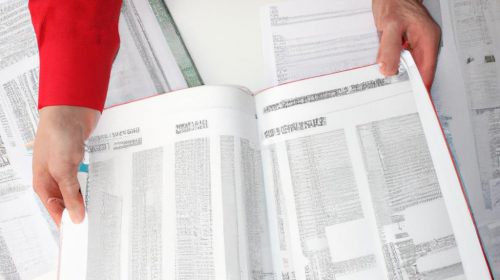Lease Agreements and Contracts: Insights for Real Estate Property Management
Lease agreements and contracts play a crucial role in the realm of real estate property management, providing a legal framework for the landlord-tenant relationship. These documents outline the rights and responsibilities of both parties involved, ensuring that all terms agreed upon are upheld throughout the duration of the lease. For instance, consider the hypothetical scenario where a tenant signs a lease agreement to rent an apartment. This document would specify details such as the monthly rental amount, payment due dates, maintenance obligations, and any restrictions on use or alterations to the premises. By establishing clear guidelines through lease agreements and contracts, real estate property managers can effectively mitigate potential disputes and maintain harmonious relationships between landlords and tenants.
In addition to defining key provisions pertaining to financial matters and property usage, lease agreements also serve as valuable tools for risk mitigation within real estate property management. As part of their due diligence process, property managers must carefully draft these agreements with meticulous attention to detail. They should anticipate various scenarios that could potentially arise during the course of a tenancy – such as late payments or damages caused by tenants – and incorporate appropriate clauses to address these situations. Moreover, comprehensive leases often include provisions regarding insurance requirements, liability limitations, termination procedures, renewal options, and dispute resolution mechanisms. Through proactive measures like providing clear guidelines for property maintenance and repairs, conducting regular inspections, and enforcing lease terms, property managers can minimize risks and protect the interests of both landlords and tenants.
Furthermore, lease agreements also play a crucial role in ensuring compliance with local laws and regulations. Real estate property managers must stay updated on relevant legislation and incorporate necessary provisions into their leases to remain in compliance. This includes adhering to fair housing laws, disclosing any lead paint hazards, providing required notices for rent increases or termination, and following eviction procedures as outlined by the law.
In summary, lease agreements and contracts are essential tools in real estate property management. They establish a legal framework that outlines the rights and responsibilities of both landlords and tenants, helps mitigate potential disputes, protects against risks, ensures compliance with laws and regulations, and ultimately fosters harmonious relationships between all parties involved.
Importance of Lease Agreements in Rental Properties
Importance of Lease Agreements in Rental Properties
Lease agreements play a critical role in the management of rental properties. These legally binding contracts define the terms and conditions under which a property is rented out, ensuring clear communication and mutual understanding between landlords and tenants. Let’s consider an example to illustrate their significance:
Imagine a scenario where a tenant moves into an apartment without a lease agreement. In such cases, both parties may have different expectations regarding rent payments, maintenance responsibilities, or even the duration of the tenancy. This lack of clarity can lead to disputes, misunderstandings, and potential legal issues down the line.
To emphasize the importance of lease agreements further, we present four key reasons why they are essential for effective real estate property management:
- Protection: A well-drafted lease agreement provides protection for both landlords and tenants by clearly outlining their rights and obligations. It helps safeguard against potential breaches or disagreements that may arise during the course of the tenancy.
- Certainty: By establishing clear guidelines on matters such as rent amounts, due dates, security deposits, pet policies, and maintenance procedures, lease agreements provide certainty for all parties involved. This ensures that everyone knows what is expected from them throughout the duration of the lease.
- Documentation: Lease agreements serve as valuable documentation for recording important details like move-in condition reports, agreed-upon repairs or alterations, or any additional clauses negotiated by both parties. Having written evidence helps avoid confusion or selective memory when disputes arise later on.
- Enforceability: As legally binding documents, lease agreements hold weight in court if conflicts cannot be resolved amicably through negotiation or mediation. They provide landlords with grounds to take action should tenants violate any terms stated within the contract.
| Importance | Description |
|---|---|
| Protection | Safeguards against breaches or disagreements |
| Certainty | Establishes clear guidelines on various aspects |
| Documentation | Records important details and negotiations |
| Enforceability | Provides legal grounds for action if needed |
In light of these reasons, lease agreements are indispensable tools in real estate property management. They promote a harmonious landlord-tenant relationship by setting clear expectations, reducing the likelihood of conflicts, and protecting both parties’ interests.
Transitioning to the subsequent section about “Key Elements to Include in Lease Agreements,” let’s explore how these contracts can be effectively structured to maximize their benefits without saying “step.”
Key Elements to Include in Lease Agreements
Now, let us delve deeper into the key elements that should be included when drafting such agreements.
Before we proceed, consider this hypothetical scenario: Sarah owns a residential property and decides to rent it out. She finds a tenant named John who seems reliable. However, they fail to discuss specific terms and conditions regarding their agreement. As time goes by, conflicts arise due to misunderstandings about responsibilities and obligations. This situation could have been avoided if there had been a well-drafted lease agreement in place.
To ensure smooth functioning of rental properties, here are some essential elements that should be incorporated into lease agreements:
-
Parties involved: Clearly identify both parties – the landlord (property owner) and the tenant(s). Include accurate contact information for effective communication throughout the tenancy period.
-
Property description: Provide detailed information about the rented premises, including its address, type (residential or commercial), square footage, number of rooms/units, amenities offered, parking availability, etc.
-
Terms of occupancy: Outline the duration of tenancy – whether it is on a month-to-month basis or for a fixed term (e.g., one year). Specify start and end dates clearly to avoid confusion later on.
-
Rent payment details: Highlight how much rent needs to be paid regularly (monthly or as agreed upon) and accepted modes of payment (cash, check, online transfer). Mention any late fees or penalties for missed payments.
Now let’s take a look at an example table illustrating different clauses commonly found in lease agreements:
| Clause | Explanation |
|---|---|
| Security Deposit | Specifies the amount of money held by the landlord as security against property damages |
| Maintenance | Defines respective maintenance responsibilities between landlord and tenant |
| Pet Policy | Outlines rules for keeping pets on the rental property, if allowed |
| Termination Procedure | Describes how either party can terminate the lease agreement before its designated end date |
Understanding these key elements in lease agreements lays a strong foundation for both landlords and tenants to protect their rights and responsibilities. In the subsequent section, we will explore the different types of lease agreements commonly used in real estate property management.
Understanding the Different Types of Lease Agreements
Insights for Real Estate Property Management: Understanding the Different Types of Lease Agreements
Now, let’s delve into the different types of lease agreements commonly used in real estate property management. To illustrate this further, let’s consider an example scenario involving a commercial property.
Imagine you own a retail space within a bustling shopping center and are looking to lease it out to potential tenants. Depending on various factors such as duration, flexibility, and responsibility allocation, there are several types of lease agreements available:
-
Gross Lease Agreement:
- The landlord covers all expenses related to the property, including utilities, maintenance costs, and taxes.
- This type of agreement provides simplicity for tenants who have fixed monthly payments without worrying about additional costs.
-
Net Lease Agreement:
- In this arrangement, the tenant is responsible for paying not only rent but also a portion or all of the operating expenses associated with the property.
- Common variations include Single Net (tenant pays rent plus property tax), Double Net (tenant pays rent plus property taxes and insurance), and Triple Net (tenant pays rent plus all operating expenses).
-
Percentage Lease Agreement:
- Typically utilized in retail spaces where tenant success directly correlates with sales volume.
- Rent is calculated based on a percentage of the tenant’s gross monthly sales revenue.
- It ensures landlords benefit from successful businesses while providing an incentive for tenants to thrive.
-
Ground Lease Agreement:
- Used when leasing land rather than buildings or structures erected upon it.
- Often employed by developers who may require long-term access to specific locations but prefer not to purchase outright.
To better visualize these different types of leases along with their distinguishing features and considerations, refer to Table 1 below:
| Type | Responsibility Allocation | Example |
|---|---|---|
| Gross Lease Agreement | Landlord covers all expenses | Retail space in a shopping center with fixed rent |
| Net Lease Agreement | Tenant shares operating costs | Office space where tenant pays property tax and insurance |
| Percentage Lease Agreement | Rent based on sales revenue | Boutique store with monthly rent linked to sales |
| Ground Lease Agreement | Leasing land only | Long-term lease of empty lot for future development |
Table 1: Different Types of Lease Agreements
Understanding the different types of lease agreements can help real estate property managers tailor their contracts to meet specific needs. By carefully selecting the appropriate type, both landlords and tenants can establish mutually beneficial arrangements that align with their respective goals.
Moving forward, it is important to consider the legal aspects associated with lease contracts. This includes understanding the necessary clauses, obligations, and potential pitfalls that need addressing before finalizing any agreement.
Legal Considerations for Lease Contracts
Understanding the Different Types of Lease Agreements can provide valuable insights into the world of real estate property management. In this section, we will delve deeper into the various types of lease agreements and their key characteristics. To illustrate these concepts further, let’s consider an example:
Imagine a commercial property owner named Sarah who wants to rent out her space to different businesses. She has come across four potential tenants: a restaurant owner, a retail store owner, a small business entrepreneur, and a corporate office representative. Each tenant requires a specific type of lease agreement tailored to their unique needs.
Here are some important points to consider regarding the different types of lease agreements:
- Gross Lease: This type of lease agreement is commonly used in commercial properties where the landlord pays for all or most operating expenses such as utilities, maintenance fees, and property taxes.
- Net Lease: Unlike gross leases, net leases require tenants to pay for certain additional costs on top of their base rent, such as insurance premiums or common area maintenance charges.
- Percentage Lease: Typically utilized in retail spaces, percentage leases allow landlords to receive a percentage of the tenant’s sales revenue in addition to the fixed base rent.
- Residential Lease: When dealing with rental properties like apartments or houses, residential leases outline terms and conditions that govern the relationship between landlords and tenants.
To better understand how these lease agreements differ from one another, let’s take a look at the following table:
| Type of Lease Agreement | Key Characteristics |
|---|---|
| Gross Lease | Landlord covers operating expenses |
| Net Lease | Tenant shares additional costs |
| Percentage Lease | Rent based on tenant’s sales revenue |
| Residential Lease | Pertains specifically to housing rentals |
By comprehending the distinctions between these types of lease agreements, real estate property managers can make informed decisions when entering into contractual arrangements with prospective tenants.
In preparation for the next section on “Tips for Drafting Effective Lease Agreements,” it is crucial to understand the legal considerations that should be taken into account when creating lease contracts. This knowledge will empower property managers to draft agreements that protect their interests and maintain a mutually beneficial relationship with tenants.
Tips for Drafting Effective Lease Agreements
In the previous section, we explored the importance of legal considerations when drafting lease contracts. Now, let’s delve deeper into some key aspects that property managers should keep in mind to ensure effective and legally sound agreements.
1. Clarity and Specificity: It is crucial for lease agreements to be clear and specific in their terms and conditions. Ambiguities or vague language can lead to misunderstandings and disputes down the line. For example, consider a hypothetical scenario where a lease agreement states that “pets are allowed.” Without further clarification, this broad statement could be interpreted differently by tenants who own small dogs versus those who have large breeds or exotic pets.
2. Compliance with Local Laws: Property managers must stay up-to-date with local laws and regulations governing rental properties. Failure to adhere to these laws may result in legal consequences such as fines or even eviction delays. One essential aspect is understanding rent control policies if applicable in your area. These policies often limit how much landlords can increase rent each year, protecting tenants from excessive hikes.
3. Tenant Screening Process: Conducting thorough tenant screenings before signing a lease agreement can help mitigate potential risks associated with unreliable or problematic tenants. This process typically involves background checks, credit history verification, employment verification, and contacting previous landlords for references.
- Emotional Response Bullet Points:
- Peace of Mind: A well-drafted lease contract provides peace of mind to both landlords and tenants.
- Fairness: Clear terms create a fair environment for all parties involved.
- Legal Protection: Complying with local laws safeguards against legal issues.
- Trustworthiness: A comprehensive screening process builds trust in selecting reliable tenants.
| Benefit | Description |
|---|---|
| Peace of Mind | Ensures clarity regarding rights, responsibilities, and expectations |
| Fairness | Creates an equitable environment for both landlords and tenants |
| Legal Protection | Mitigates legal risks by complying with local laws |
| Trustworthiness | Establishes trust in selecting reliable and responsible tenants |
In conclusion, property managers should prioritize clarity, compliance, and thorough tenant screening when drafting lease agreements. By doing so, they can foster a fair and transparent rental environment that protects the interests of all parties involved.
Transitioning into the subsequent section about “Common Mistakes to Avoid in Lease Agreements,” it is important to be aware of potential pitfalls that could undermine an otherwise well-drafted contract.
Common Mistakes to Avoid in Lease Agreements
Transitioning from the previous section on drafting effective lease agreements, it is crucial for real estate property managers to be aware of common mistakes that should be avoided when creating these legal documents. Understanding and avoiding these pitfalls can help ensure that lease agreements are comprehensive, legally sound, and protect the interests of both parties involved.
One common mistake is failing to clearly define the responsibilities of each party. For example, consider a hypothetical scenario where a tenant agrees to rent an apartment with access to shared amenities such as a gym or pool. However, if the lease agreement does not explicitly state whether the tenant has exclusive rights to use those facilities or if they are available on a first-come-first-served basis, conflicts may arise between tenants regarding access and usage privileges.
To further illustrate this point, let us examine some other frequently encountered errors in lease agreements:
- Insufficient termination clauses: Failing to include clear terms for early termination or renewal options can lead to confusion and disputes down the line.
- Inadequate maintenance provisions: Neglecting to outline specific responsibilities for repairs and maintenance can result in disagreements over who is responsible for certain damages or wear-and-tear.
- Unclear pet policies: A lack of clarity regarding pets can cause issues relating to noise disturbances, damage caused by animals, or even liability concerns in case of accidents involving tenants’ pets.
- Failure to address dispute resolution mechanisms: Without appropriate guidelines for conflict resolution, disagreements between landlords and tenants might escalate into lengthy legal battles instead of being resolved amicably through mediation or arbitration.
By avoiding these common mistakes during lease agreement preparation, real estate property managers can minimize potential conflicts and mitigate risks associated with unclear expectations. It is important to remember that well-drafted lease agreements provide a strong foundation for successful landlord-tenant relationships, fostering trust and reducing misunderstandings throughout the duration of the tenancy.
| Common Mistakes | Description |
|---|---|
| Insufficient termination clauses | Failing to include clear terms for early termination or renewal options can lead to confusion and disputes down the line. |
| Inadequate maintenance provisions | Neglecting to outline specific responsibilities for repairs and maintenance can result in disagreements over who is responsible for certain damages or wear-and-tear. |
| Unclear pet policies | A lack of clarity regarding pets can cause issues relating to noise disturbances, damage caused by animals, or even liability concerns in case of accidents involving tenants’ pets. |
| Failure to address dispute resolution mechanisms | Without appropriate guidelines for conflict resolution, disagreements between landlords and tenants might escalate into lengthy legal battles instead of being resolved amicably through mediation or arbitration. |
In summary, real estate property managers must be diligent when it comes to lease agreements, avoiding common mistakes that could lead to conflicts and potential legal ramifications. By clearly defining responsibilities, incorporating comprehensive termination clauses, addressing maintenance provisions, establishing unambiguous pet policies, and including effective dispute resolution mechanisms, property managers can safeguard the interests of both parties involved in the leasing process.



